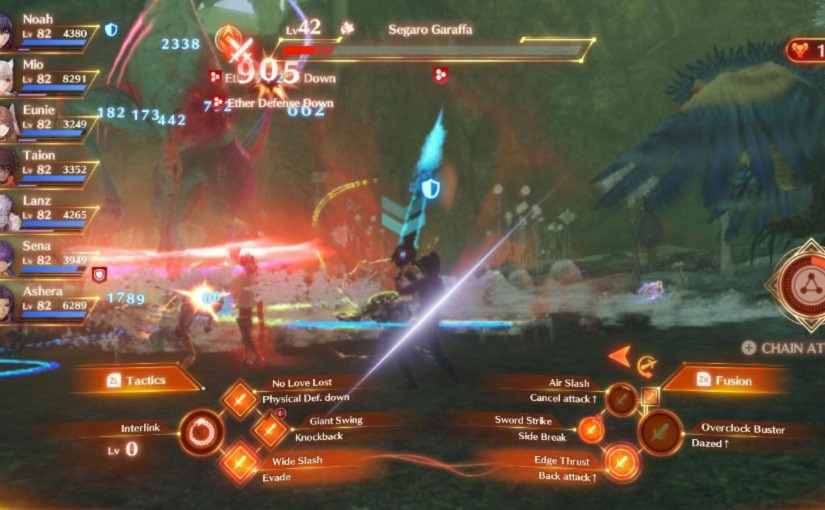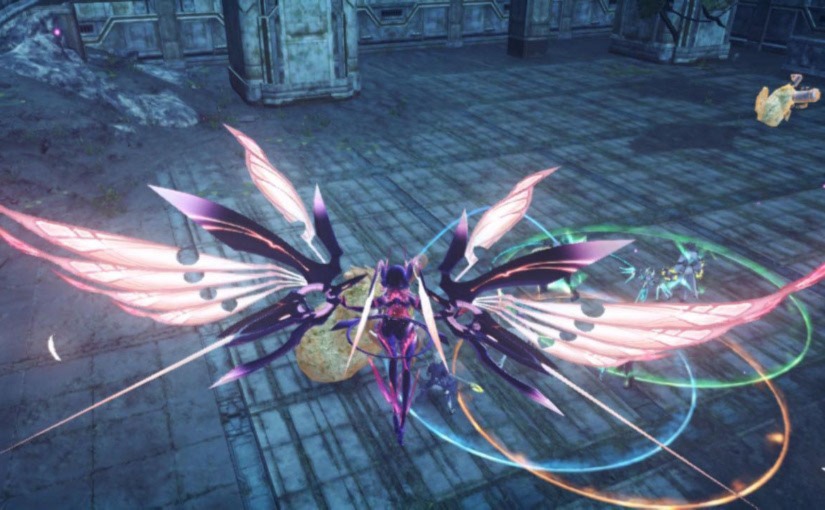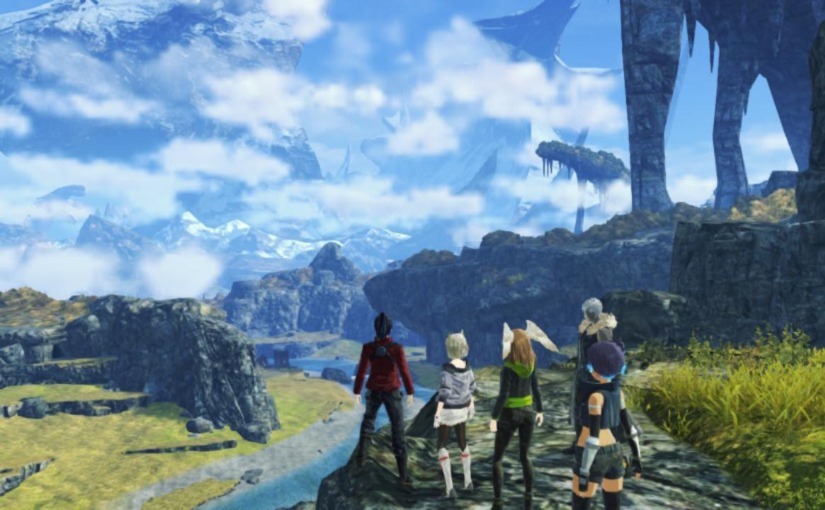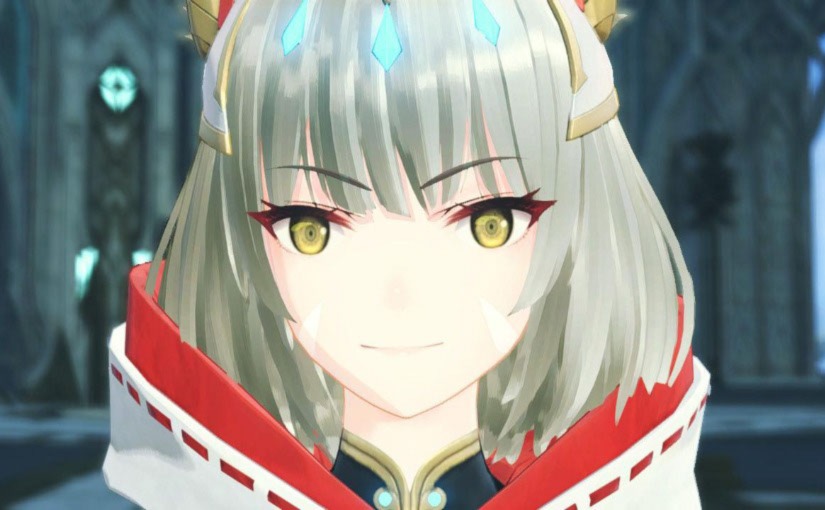Live to Fight and Fight to Stay Awake
Alright, so that subtitle is a bit misleading. I didn’t find Xenoblade Chronicles 3 boring (rest assured I would not have stuck with it if I did), I just found it very, very comfy. I’ve already touched on this thought in my other writings that can be found in various corners of the internet, but a good JRPG is like a cosy duvet and a fluffy pillow, pyjamas and slippers and warm milk, and gentle rain pattering on the window. Xenoblade Chronicles 3 has a very long run-time, it has a battle system that, if you’re a bit over-levelled, can require very little input from the player, it has expansive, dream-like landscapes and an otherworldly ambient soundtrack. All of these factors and more combine to make it impossible for me to play this game for more than a couple of hours at a time without drifting off, controller in hand, as my chosen character idles in the middle of a battlefield surrounded by monstrous fauna. It’s alright though, because the rest of the party will take care of them, and the victory fanfare will usually wake me up.
Xenoblade Chronicles 3 is a very typical JRPG in some ways, but completely does its own thing in others. The story follows a small group of soldiers under the banner of the nation of Keves, who soon get thrust together with a similar group of soldiers from the opposing nation of Agnus. The world is locked in a seemingly-eternal battle in which opposing sides kill to fill their “flame clocks” with the life energy of their fallen enemies. The people of this world seem to have a ten-year life span, appearing as a young teenager and “ascending” in their twenties, if they survive that long. These ten years of life are dedicated to a mysterious queen, and that’s about all you’ll know for quite some time. There are no traditional RPG towns, almost every settlement you come across is a military base inhabited by personal from one of the two major factions, and almost every NPC you’ll meet is a soldier in the never-ending war.

Noah is the main protagonist, and is an off-seer, a soldier tasked with playing those slain in battle off to the next life with his special flute. His role handily sets up the game’s contemplative tone, but the world is very slow to reveal its secrets. There’s an opening scene that initially seems barely linked to the rest of the story, and it’ll be ages before you even know who you’re fighting against. The story is definitely a slow-burner, but it’s okay because there’s plenty to keep you occupied. Huge areas to explore, extra-tough, bonus monsters to fight, side quests galore, and equipment and class systems that give endless scope for build-tweaking and customisation. If, like me, you’re not into all that min-maxing stuff, there is a handy auto-equip option that will get you through the main game absolutely fine.
The six main characters run the gamut of decent to extremely likeable, with the roguish Lanz and Eunie and the occasionally prudish Taion being my personal favourites. Each of these characters comes with a character class that fits into one of three categories; attack, defence or healing. They don’t have to stick to these classes though, and can be given another character’s class with the press of a button, gaining new weapons and a new move-set. This means that studious healer Taion can become a longsword-wielding damage-dealer, or front-line defender Lanz can be converted to a back-of-field support and healing role, should you so wish. Certain skills from certain classes can be carried over to new classes too, giving even more scope for customisation. There are numerous “hero” characters that you’ll encounter throughout the game, and these guys take up the seventh slot in your active party. They bring whole new classes to the mix which can also be equipped to your main party members, and there are loads of them in the main game and even more in the post-game, resulting in a galaxy of options when it comes to fiddling with character and party builds.
The battle system feels like it was pulled from something like World of Warcraft, with various skills available that slowly recharge after use. Initially, the battles are simple, consisting of standing your chosen character (you can control any of the main six) next to the enemy and letting them auto-attack, then activating special attacks as they become available. As you advance, the combat system becomes more intricate, adding layer upon layer of complexity with attack-types that can be chained into other attack-types, moves that can be cancelled into other moves, special abilities that can be activated by building up a metre, and other special abilities that can be activated by building up other metres. Positioning is very important, as certain attacks are more effective from certain angles, and you’ll charge your chain attacks quicker if you attack from the right direction. The chain attacks, once activated, tee up a kind of interactive, anime-style cut-scene event where everyone gets to do their cool moves in an order that you define. Even this is complex and multi-layered, as you’ll need to balance the build up to the finishing move in such a way that you boost your damage multiplier as much as possible. Also, characters can merge to form a single, extra-powerful being, which will open up even more options and approaches. Remember, if all of this seems too much, just stick to the basics and you’ll be fine. That is totally what I did.

The world is large and mostly open, with huge, bizarre structures and rock formations looming on the horizon that you might eventually find yourself climbing over later in the game. There are various boss enemies and supply caches hidden about the place, but if you’re not too into the crafting and stat-maximising side of the game, the containers you can find won’t seem like much of a reward. The world can feel lifeless despite the number and variety of monsters roaming about, but this is likely a deliberate attempt to communicate the war-torn nature of things, with the only humanoid denizens belonging to the various military colonies that are hidden in ravines or behind waterfalls. The creature design is very interesting, from buzzing wasp-type enemies to gigantic, thundering colossi that are probably way too high level for you to even contemplate going up against. Xenoblade Chronicles 3 is not afraid to sprinkle its low level areas with high level enemies that you’ll be expected to come back and defeat much later in the game. This can occasionally result in you getting one-shotted by a rogue, high level monster that has snuck up on you while you were occupied with something else. Don’t worry, the party will just appear at the nearest safe area with nary a scratch on their pretty, anime faces.
Speaking of which, the characters are interesting and well-designed, with their outfits having an understated quality that eschews the over-the-top fantasy/steampunk clothing you might expect from games in this genre. The voice acting is mostly on point, and Xenoblade Chronicles 3 continues the series tradition of making almost everyone sound like they’re from Dickensian London, although there are definitely some Welsh, Irish, Scottish and Australian twangs in there, too. Again, my favourite character here is Lanz, whose exclamations of locating rare “doodahs” out in the field have become something of a meme in my household.
Even though I really enjoyed Xenoblade Chronicles 3, there are things about it that can make it difficult to recommend, especially to those with less experience in the JRPG scene. The battle system that initially seems barely interactive is the foremost of these stumbling blocks, but if you come in with an open mind, or you’re an RPG veteran, you’ll soon realise that there is a wealth of depth and strategy on offer. Despite these options and details, the battles rarely felt especially epic, even with the majestic visuals and stellar musical accompaniment. If a battle is too difficult for you, it doesn’t feel like there’s much you can do about it other than grind a few levels. This isn’t true of course; you can change your party composition by adding healers or defensive classes, or tweak your moves and equipment, but it’s all preparation and no skill, all science and no art. I also found that I became over-levelled after a chapter or so, and started to breeze through the story missions and most side-quests. I didn’t really need to pay attention during the battles, and that’s when the sleepiness set in.

I knew what I was getting into with Xenoblade Chronicles 3, but it still had its surprises. The story, though winding and very introspective, is interesting and has some surprising moments, the main characters are endearing, and there are some highlights among the secondary hero characters, too. The villains are less memorable, but they do the job. There are some awesome cut-scenes and some great vehicle and robot designs, and some gorgeous exploration music joins one or two memorable and epic battle themes on the soundtrack.
I enjoyed Xenoblade Chronicles 3 a lot. I enjoyed it, and then I got used to it, and then I took it for granted, and now I can’t play it without drifting off to dreamland. There is post-game content, but I think I’ll save it until the next time I’m suffering from a bout of insomnia.

